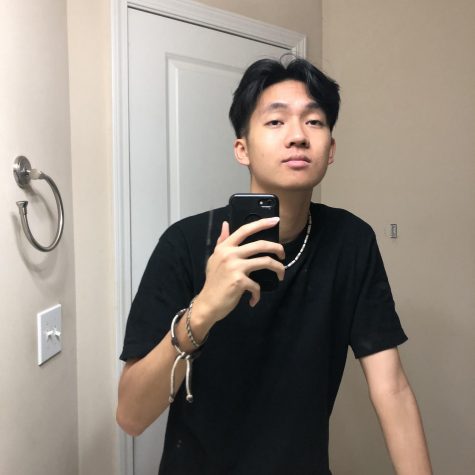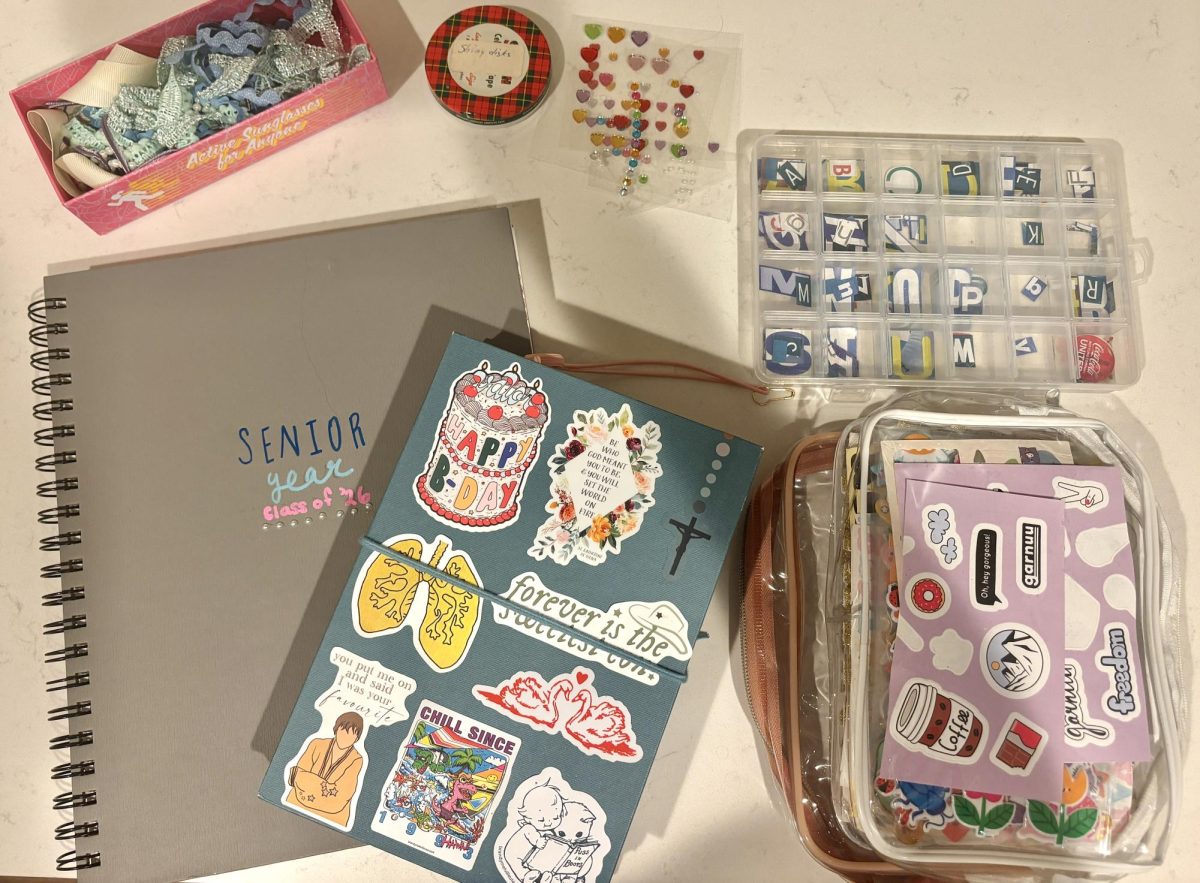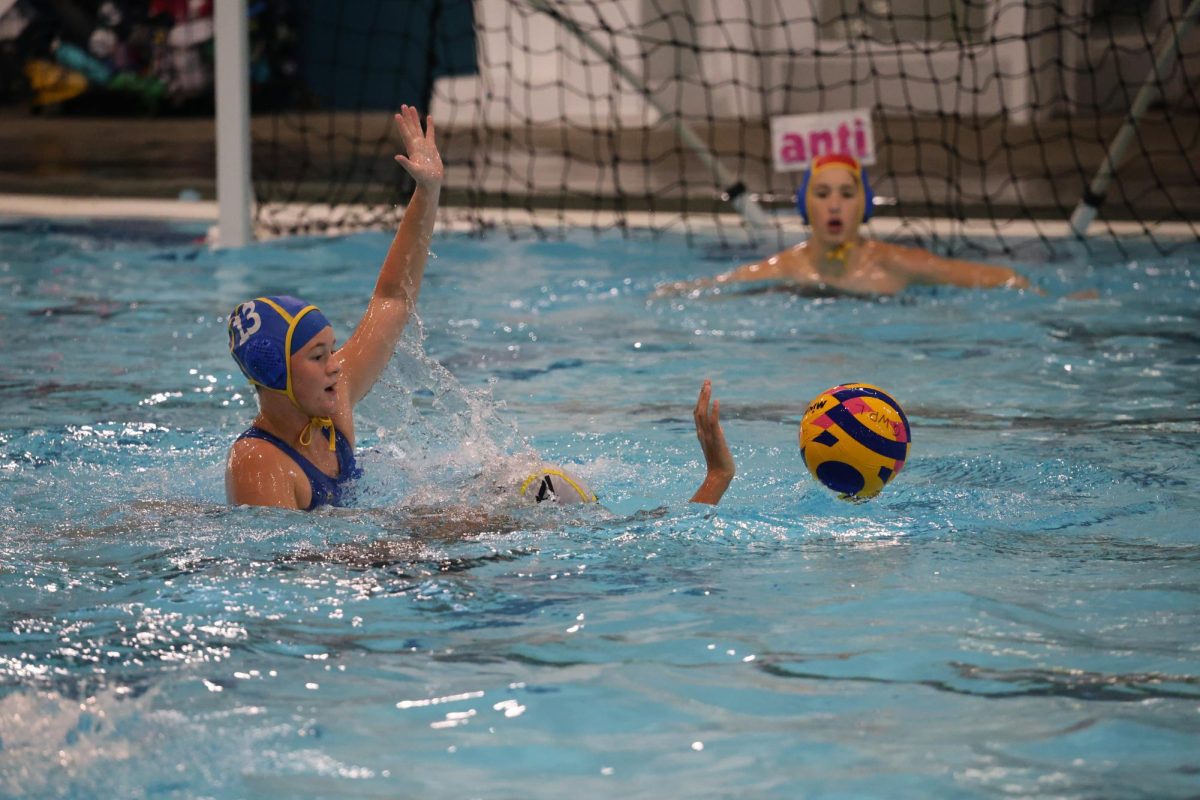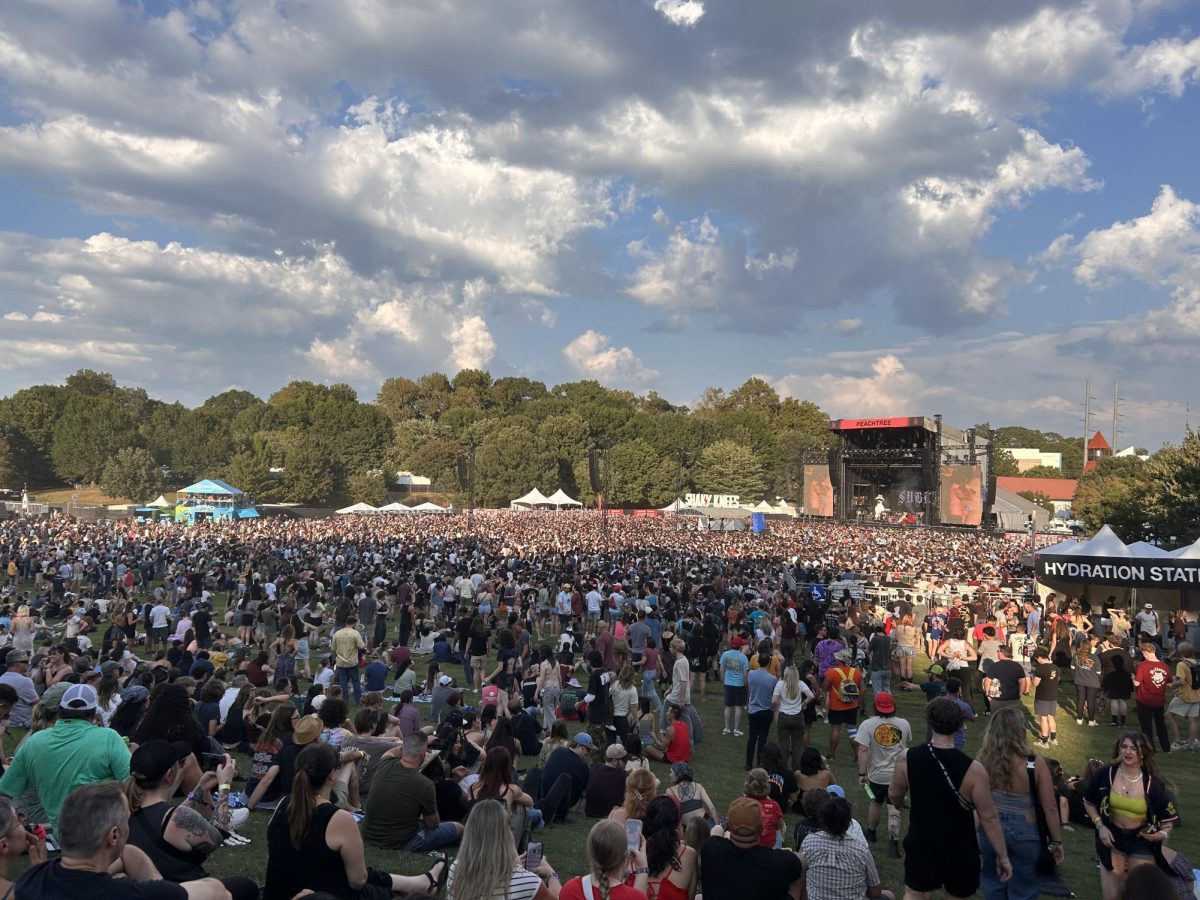Visual Arts Department
A roll of undeveloped film.
January 13, 2020
Photo I
This class is the first step in the photography track, but to take it you do have to have taken visual arts first. Because this is the beginning photo class, this class is a bit more structured compared to Photo II and AP Photo. However, some students who are very new to photography feel like there is still not enough instruction.
“I don’t feel like it’s very guided,” said Olivia Roberts. “I just feel like we’re given information once or twice and then it’s very independent. That works with like AP students, but this is an introduction.”
Therefore, at least some prior experience may be useful for students interested in taking Photo I. However, Roberts did mention that you are eased into photography by starting with pinhole cameras and then working your way to using film cameras and developing your own film.
For many students, working in the darkroom, which is where film is developed, is the highlight of Photo I, although it does come with a certain amount of stress.
“I love the darkroom,” said Sirianna Blanck. “It’s a very like calming like space, and it’s really gratifying to go through all the steps [of developing a photo] and see a finished product. But, developing your film in the darkroom is also really nerve-wracking that you’re going to mess up your final film because you have to do it all without looking at it.”
Furthermore, although students seemed to agree that it is pretty easy to get an A in Photo I, you do have to put effort into the class for the A. Additionally, students should come prepared to take quizzes and write essays about famous artists in this class.
Photo II
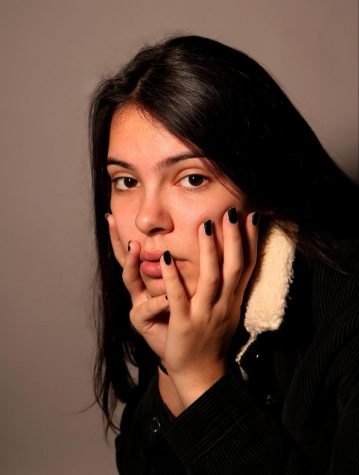

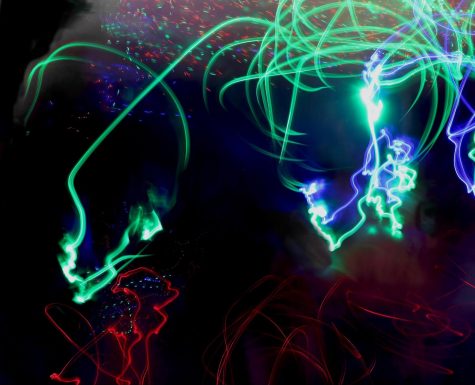
Photographs from a Photo II Student.
After learning and practicing how to take and develop pictures using film cameras, students transition to digital photography in Photo II. Furthermore, Photo II is meant to expand students’ knowledge of basic photography skills and expose them to more styles of photography. That being said, interviewees said that students still enjoy creative freedom in the class. This translates to a lot of individual work time to shoot and edit pictures.
Art classes and electives in general may have a reputation as extremely easy classes, but this is not true for Photo II.
“[Photo II] is not for the faint of heart because I think it has a really heavy workload for an art elective and can be pretty creatively exhausting,” said Stella Garrett.
However, according to Photo II students, as long as you put effort into the class and do not get behind, you will earn an A. Thus, you really will get out of this class what you put into it.
“If you just produce work to produce work, you’re not going to be happy with what you’re turning in,” said Georgia Premoli. “It is like if you’re not 100% sold on taking [Photo II], it’s just not worth it because you’re just gonna be turning in pictures that you’re not happy with.”
AP Studio Art: 2-D Design (AP Photo)

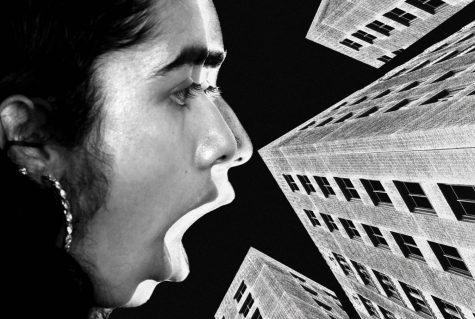
Photographs from AP Photo students.
This step is the final class in the Photo pathway. As such, it is usually taken by seniors and generally requires previous photo classes as a prerequisite. Because this is an AP art class, the entire year students are working towards creating their portfolio that they will then send to College Board as their AP exam.
“This is AP photo,” said Shrika Madivanan, “so everything that we’re doing is for the AP exam. For the AP exam, we have to turn in a sustained investigation. Which means we have to turn in 15 photos that all have a theme that resides within all of them.”
That said, the theme cannot any simple topic, like black and white. One example is exploring different textures through photography.
Besides the added complication of an AP exam, this photo class functions similarly to Photo 2 in that it is mainly individual work and students have a lot of creative freedom.
Students in AP Photo say that this class is even less structured that previous photo classes.
“I think that progressing through the levels, you start out in Photo 1 with a lot of structure, but being an AP photo, a lot of [the class] is your responsibility and a lot more of your own creativity, which kind of controls like your own schedule,” said Ashley Veazey.
Finally, this class is relatively easy to keep an A, but it is also easy to fall behind on your projects and let them pile up, so good time management is fairly important for this class.
AP Studio Art: Drawing
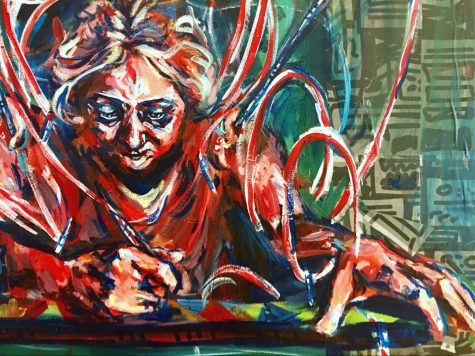
Painting done last school year by senior Klara Nitsche in her AP Drawing class.
AP Studio Art: Drawing, or AP Drawing, is a self-directed art course where students are given the freedom to create drawn pieces based on their own style and ideas. The end goal is for students to turn in a portfolio of 15 pieces with a common central idea or concept by the end of the year to be reviewed and scored by College Board. Students can create pieces through various drawing mediums and are allowed to express themselves to their liking as opposed to the ordinary teacher-guided classroom. In fact, AP Drawing students most commonly described the course as “free” and “independent.”
“My favorite part [of the class] is the level of freedom that I can use to have my portfolio represent me and my style,” said junior Olivia Roberts.
However, that isn’t to say that students can just slack off. According to junior Iris Tsouris, the class can be “demanding and mentally taxing” at times when you feel like you don’t have time to do stuff, especially if you aren’t caught up, fall behind, or miss deadlines. Students are expected to stay on track and reserve time outside of class to finish their pieces if they are to take the class seriously.
“It’s not a class just to take if you’re just trying to fill in space—you’re gonna have to do work,” said senior Casey Jones.
However, the course load can definitely be manageable if you stay on top of your pieces by planning and organizing.
“It all comes down to planning because if you work fast, you could get things done really early and [if you] work slow it’s the opposite. But if you budget your time based on what you know about your own work ethic then it’s a manageable amount of work,” Roberts said.
Drawing/Painting I
Drawing/Painting I is the drawing art course students take after Intro to Visual Arts and the prerequisite to more advanced courses such as Drawing/Painting II, AP Drawing, and AP Art and Design. According to Drawing I students, the class is similar to Visual Arts in that it’s centered around drawing except more in-depth as students are asked to do more and are able to further develop their skills using multiple different mediums that were unavailable in the intro course.
“[We learn] to use different mediums to create desired textures and contrasts [and] we get to expand our range and use creativity,” said junior Samantha McCrery. “It is a great opportunity to try new things.”
As for the course load and work, the class seems to be relatively easy-going, though the art process can sometimes be a little demanding.
“It can be challenging but is enjoyable. We rarely have homework and what we get doesn’t take too long to do,” said junior Sasha Laidler.
According to senior Quanterreo Cutter, you should have an interest in art or be prepared to do a lot of drawing if you sign up for the course.
“If you want to be good at drawing and stuff, then yeah, [the class] is good for you but if they just put you in an art class for no reason, you should get a different class,” said Cutter.
Overall, most students seem to enjoy Drawing 1 and the laid-back nature of the class.
“Art is calming to me so I wanted to be able to have a period of my day where I get to relax and let my creative juices flow,” said McCrery.
According to the students, if you have a passion for art and creativity, this class is a great second step into the art pathway.
“Everybody’s happy about it. It’s just fun—class is fun, teacher’s fun,” said Cutter.
AP Studio: 2-D and 3-D Art & Design
2D:
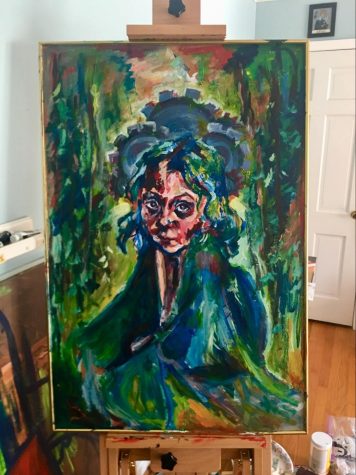
Painting done by an AP 2-D Art and Design student, Klara Nitsche.
Like the other AP art courses, AP 2-D Art and Design is a mostly independent and self-driven course in which students have nearly full freedom over the concentration of their pieces. AP 2-D in particular focuses on producing art through any two-dimensional medium, be it photography, drawing/painting or even digital modeling and art, and thus has more freedom than AP Drawing. “The class is pretty chill,” said senior Alex Jones. “I would recommend this class to people who like to have more control over what they’re creating rather than just getting assignments/prompts.”
However, because the class does not rely on teacher-assigned projects, students are much more responsible for keeping themselves motivated and on track than in Visual Arts and Drawing/Painting 1 & 2.
“I like that I can do whatever I want,” said senior Klara Nitsche. “There’s no limits at all but at the same time, it kind of gets a little bit annoying because when you get stuck in a rut, you don’t know what to do.”
Overall, the workload is manageable enough unless you make it harder on yourself, according to the students. “The course load is just right and works for the class, but if you get behind it can be a little overwhelming,” said junior Nicole Vaccaro.
3D:
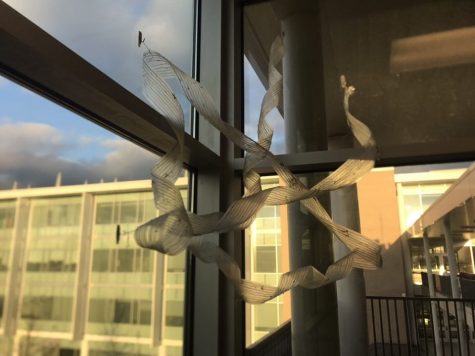
Sculpture done by AP 3-D Art and Design student, Keren Sahar.
AP 3-D Art and Design follows the same kind of class format as 2-D Art and Design except students create pieces focusing on a certain concentration through three-dimensional mediums such as sculpting and ceramics. Like AP 2-D, AP 3-D is a self-guided and self-motivated class where students are given a lot of independence in expressing themselves and deciding what kind of pieces they would like to create.
“It’s really all about exploring a certain concentration that you have,” said senior Keren Sahar. “So you have a guided question and then you have to answer it through experimentation and through sculpture, which is really cool.”
AP 3-D is unlike any of the other art classes offered at the school because it allows students to create three-dimensional artwork that is unconventional from regular two-dimensional drawing/painting.
“It’s just a fun class in general. You get to do stuff that you can show to the whole school but you can also just, like, do your own thing,” said Sahar. “It allows you to explore a lot of different forms of art that really don’t with drawing and painting.”
Drawing/Painting II
Offered to Drawing I students as well as more advanced Visual Arts students who have been allowed skip Drawing I by their art teacher, Drawing/Painting II is the last and most advanced non-AP drawing-based art class in the pathway. While still largely dependent on teacher-given assignments and projects, this course gives students much more creative freedom and leeway than the two preceding drawing-based courses.
“It’s probably the most fun art class of the non-AP classes for art. It’s advanced enough that if you enjoy art, you can enjoy the projects but all the assignments are interesting and fun. They’re more open and feel less basic and boring like Visual Arts and Drawing I,” said junior Olivia Roberts, who took the class her sophomore year.
Generally, students found the course load to be reasonably feasible if they stayed productive in class, as Roberts and senior Abby Sowell describes the workload to be “just right.”
“I really don’t think it’s that hard to keep up with the assignments, the due dates are clear and you have plenty of time per piece as long as you stay productive most of the time,” said Roberts.
All in all, students with a passion for art enjoyed the class and the level of freedom they were given over their artwork, though it may not be the best-suited class for those largely uninterested in drawing or painting.


